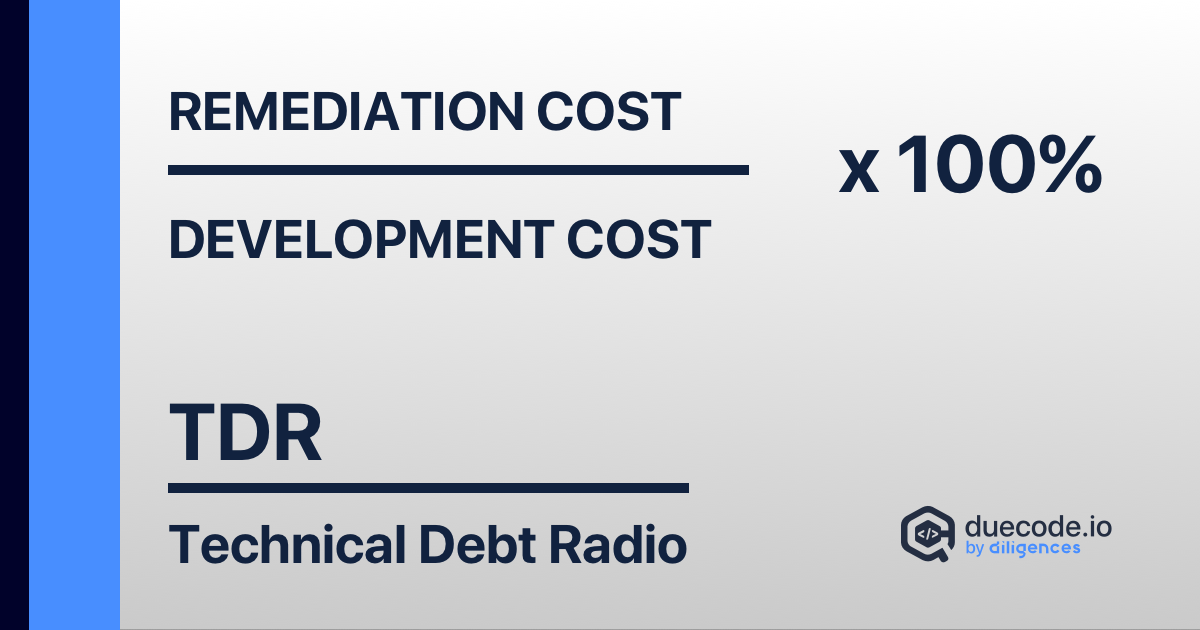What Is Technical Debt In Jira
14 April 2021 5 min read

Audio Version Of This Article
One of the major challenges developers face is handling technical debt that usually arises from taking shortcuts while writing code. Yes, meeting deadlines should be one of your main goals, but many developers try to meet this goal at the expense of code quality, which is not correct.
If you want to learn more about technical debt, what it means, and how to minimize it in your projects, this article is for you. We shall discuss everything you need to know about technical debt and how to deal with it using tools like Jira. Just make sure you read it till the end.
What is technical debt?
In software development, technical debt refers to the future cost (in terms of time and even money) resulting from choosing an easier solution today instead of using a better approach that would take much longer.
To make this clear, technical debt is not just about the bugs in your code only.
It is also about using an approach that doesn't follow the best coding standards, leading to poor quality code that may need fixing in the future. So, it is possible to have technical debt in totally bug-free code. It is also possible to have technical debt in code that runs perfectly and executes the intended task. With Jira, a bug tracking and project management tool, you can evaluate the extent of your technical debt in the project you are working on.
To make the term technical debt much clearer to you, let's share some of the indicators of code with technical debt:
Bugs
Syntax and semantic errors are some of the most common indicators of code with technical debt. Even a junior developer would know there is something wrong with the code if it has bugs. With modern project management tools like Jira and code editors like VScode, it is pretty easier to detect most of your code's bugs.
Code with outdated libraries
Code that has out-of-date-code libraries may work well today but could bring up issues in the near future. Fixing this issue may not necessarily take you a lot of time today but will likely consume more time if you try to deal with it later, which amounts to a huge technical debt.
Architectural compromises
One of the common technical debts is brought about by the temptation to use an easier architecture that may likely lead to issues in the future. The architecture you use will affect how easy it will be to update, add more features, and maintain the code you have written for a particular program. So, choosing the wrong architecture will make your work much more complicated in the future.
Incomplete feature works
Before getting started with any project, there are always features that you and your team agree to add to your code. Ignoring some of those will amount to technical debt later in the project.
One way you can deal with technical debt is, first of all, knowing how it comes about. Let's look at some of the common causes of technical debt.

What causes technical debt?
Ignorance about its implication
When one doesn't know the implication of the technical debt, it is easier to take it lightly. This kind of thing is usually common amongst junior developers who may not have dealt with technical debt before. But for someone who spent days trying to fix the mess he caused during the earlier days of the project, leaving behind technical debt is not an option.
Pressure from clients and managers
Most of the time, software development projects have deadlines, and failing to meet these deadlines may impact when and how much you get paid. Working under pressure to deliver a project in time often leads to ignoring some of the coding standards, which may later amount to a huge technical debt.
Lack of skills
When you don't have the necessary skills to handle some of the problems brought to your table, it is easy to create technical debt in your code. In this kind of situation, the person creates technical debt without knowing that they have done so.
So, how do you deal with technical debt?
1.Identify and quantify technical debt
One way you can reduce the technical debt in your code is by identifying it first. The process of identifying the existence of technical debt should be continuous, don't wait till the end of the project to identify technical; start as soon as you can. Seeing the mess you have created in your code early enough will save you a lot of time that you will likely waste fixing it later on.
With tools like Jira, it is easier to quantify your technical debt using metrics that everyone on your team easily understands. For instance, you can quantify your technical debt with metrics like the number of bugs and ignored features in your code. You can then use these numbers to calculate the technical debt ratio (TDR), which is the ratio of cost to fix the code vs. the cost to build it now. The higher the TDR value, the more time it will take to fix your code's issues.

2.Plan for it ahead of time
Knowing that technical debt exists and putting in place measures to overcome it will make your work of dealing with it much easier. While planning, you can always set aside time after every milestone to fix errors in your code. With a proper plan, you can quickly know the best time to resolve certain issues with your code based on your evaluation of their impact in the future.
3.Deal with technical debt as a team
If you are building software as a team, it is best for everyone on the team to know what technical debt is and the coding standards you want to follow. It should also be easy for every team member to see the extent of technical debt created at every development stage. With project management tools like Jira, it is pretty to have this information revealed to everyone on the development team.
How do you mark stories or bugs related to technical debt in JIRA
You want to flag stories or bugs that have a connection with technical debt. But, you don’t have any idea, how to do it. Here, I’m going to describe 3 simple ways that will help you to flag tales or technical problems in Jira. And, they are:
● Make one epic called "technical debt" that may be used as an Agile Board label. Attach those epic to respective tales and issues.
After that, one may design a JQL search that has been done on defects and technical debt tales.
● Build one 'technical debt' customized category that is linked to the issue type's narrative and defects.
Build a 'technical debt' customized category located to tales and problem of that issue type. One may generate JQL searches that look alike technical debt and debt problems.
● Make the latest "technical debt" type problems.
After it, one may make JQL searches related to the latest problem type, but you need to update the previous JQL stored searches retrospectively to take this new issue Type into account.
Conclusion
There will never be debt-free software or technology. Don't think it's as quick as possible to pay o. In the globe, no corporation has the means to pay its technical debt in one go.
Even if the program is fresh new, faster than you believe, will you inherit technical debt.
In essence, the technical debt is part of the DNA systems. So try to regulate this section of technical genetics to prevent it from becoming a systemic disorder.
Updated on the 2nd of November, 2021





